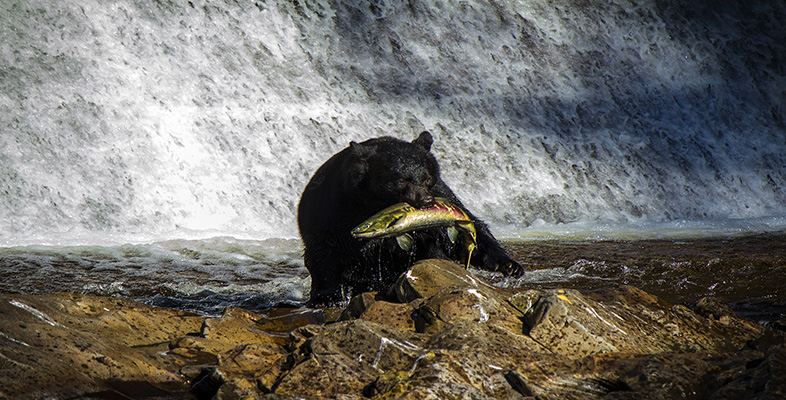1 The omnivores
As you work through this course you will come across boxes, like this one, which give you advice about the study skills that you will be developing as you progress through the course. To avoid breaking up the flow of the text, they will usually appear at the start or end of the sections.
As well as the course text, you will be using The Life of Mammals book (LoM) and related The Life of Mammals DVDs, as described in the introduction to this course. Before you go any further, watch 'The Opportunists' on the DVD and read LoM Chapter 6. Unless stated otherwise, all the page references you encounter in this course will be to LoM.
Diet plays a very important role in the life of mammals. They are often categorised, as is the case in LoM, according to what they eat, for example, herbivores and carnivores. Dividing up mammals in such a way offers insights into mammalian biology that wouldn't be so apparent had LoM followed a more orthodox taxonomic approach, focusing perhaps on different mammalian orders in turn. This approach reveals the diversity of mammals - their varying dentition and differences in their reproductive habits, for example - against a background of their common features, such as the need to fuel a relatively high body temperature via the intake of substantial amounts of energy-yielding food.
That mammals need energy to support all aspects of their lives, be it breathing, running, excreting, repairing cells, reproducing, keeping warm, is therefore a central, unifying theme of the 'Studying mammals' series of units. So is the notion of specialisation of diet - that mammals display adaptations, i.e. specialised teeth or complex stomachs, that enable them to cope with the demands of particular diets. This course returns to these two related themes of energy and of specialisation, building on the topics covered in prior units in the series, but in each case offering a fresh perspective. For the first theme (in Section 2), I'll be concerned with how the energy contained within foodstuffs passes between different organisms, between prey and predator for example, and what this process reveals about the interactions and interdependencies between organisms with different diets, mammals included. Such issues are central to the branch of biology known as ecology; ecological ideas are essential to understand what makes particular populations of interacting organisms 'tick'.
Learning more about how energy flows between different organisms raises the question of how mammals satisfy their energy demands by being specialist feeders. Having said so much in earlier units about the features associated with the diets of insects, plants or other animals, and dwelt on the presumed advantages of such lifestyles, why might omnivorous mammals of the type you have just read about in LoM have 'broken the rules' and adopted a much more wide-ranging diet? LoM Chapter 6 offers many examples of such opportunistic feeders and this course will tell you a good deal more about their biology, going beyond the level of detail that LoM provides. You'll know from LoM that omnivores have by definition a wide-ranging diet but, unlike carnivores for example, there is no defined taxonomic group called 'Omnivora'. Rather, the habit has developed in a whole range of mammalian groups. So in what follows you can expect an account that mixes examples of mammalian diversity with the identification of characteristics that are common to many omnivores.
